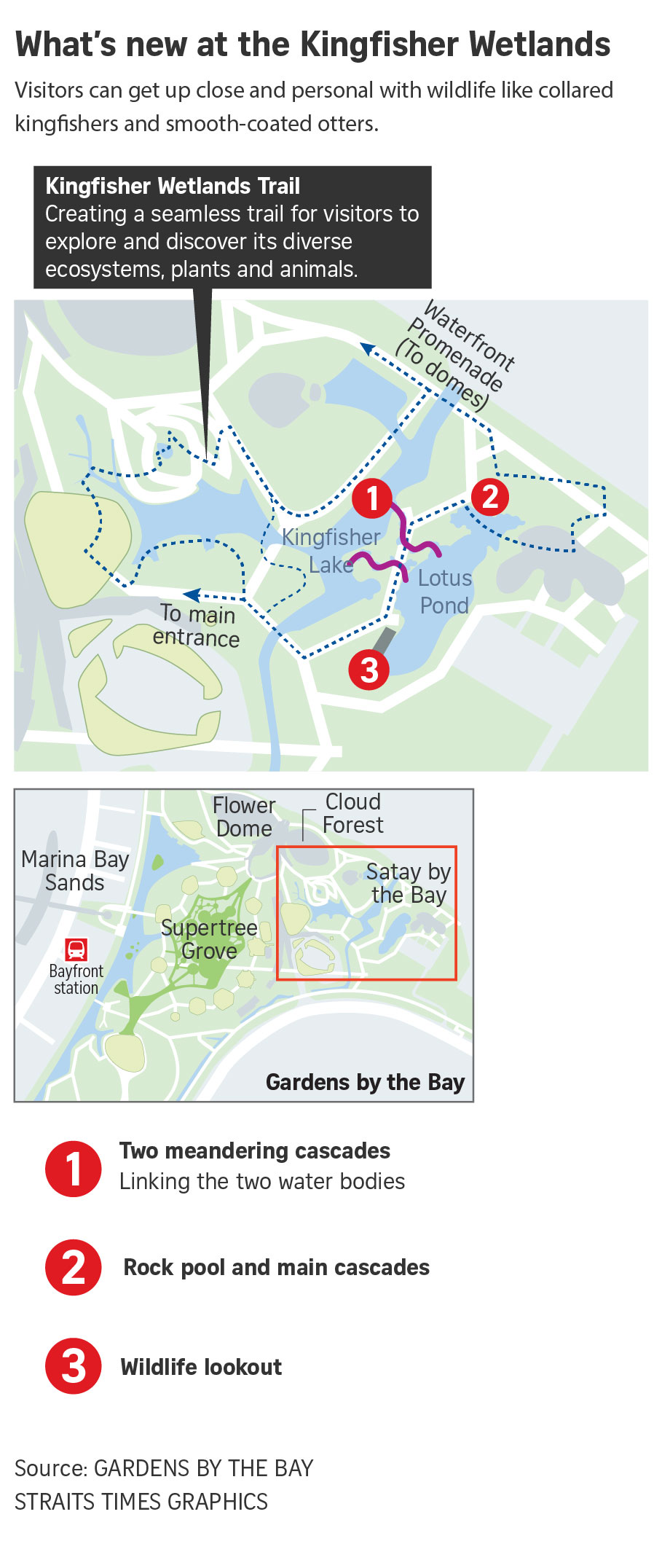Get wowed by wildlife at newly opened Kingfisher Wetlands at Gardens by the Bay
Sign up now: Get ST's newsletters delivered to your inbox
Follow topic:
SINGAPORE - Nature lovers and photography enthusiasts have another spot to watch wildlife with the opening of the Kingfisher Wetlands, the Gardens by the Bay's newest attraction, on Friday (Nov 12).
Officially launched by Minister for National Development Desmond Lee, the wetlands occupy an area of more than 15,000 sq m, about the size of two football pitches. The attraction is located next to the Satay by the Bay foodcourt and comprises the area taken up by Kingfisher Lake and the Lotus Pond.
The two bodies of water, which were previously separated, are now connected by two streams running under a footpath.
Along with having water cascading into a rock pool, the streams were created to help increase the level of oxygen in the water, according to Ms Lee Ping Ping, who designed the attraction.
Water is pumped from Kingfisher Lake and flows into the Lotus Pond as a waterfall.
The water then flows back into the lake through the two streams via gravity as the pond is located higher than the lake.
Ms Lee, the deputy director of design at Gardens by the Bay, told The Straits Times: "By introducing this flow of water, we help to increase the aeration of the two water bodies, which in turn helps to improve the quality of the water."
In addition, the streams allow smaller species of wildlife, which might face predators in the larger surrounding bodies of water, to find refuge in the Lotus Pond.
Other new features at the wetlands include a wildlife lookout shelter and a Kingfisher Trail.
Work on the wetlands took six months and the attraction was built with the help of a $500,000 donation from soya sauce manufacturer Kikkoman.
Over a pre-recorded speech, Kikkoman director Osamu Mogi said the donation was made to help protect Singapore's precious water resources.
"Water is crucial to our business of making soya sauce and the lakes in the garden provide clean water to the natural habitat of wildlife in Singapore," said Mr Mogi.

Along with water cascading into rock pools, the streams were built to help increase the level of oxygen in the water.
PHOTO: GARDENS BY THE BAY
More than 200 mangrove plants, some from critically endangered native species, were planted in the Lotus Pond, an ideal location for them to trap carbon from the water, according to Ms Lee.
Mr Lee said the wetlands area is an opportunity for researchers to explore the potential of "blue carbon" solutions - coastal and marine ecosystems that can capture and store carbon - and will help to support national sustainability efforts.
Mr Lee said: "The results have shown that the carbon content of the soil in the Lotus Pond is comparable with that found in natural wetland habitats, which are very efficient in storing carbon.
"By using the Kingfisher Wetlands as a living laboratory, we can further explore how best to maximise the potential of our man-made wetlands for long-term carbon storage."


